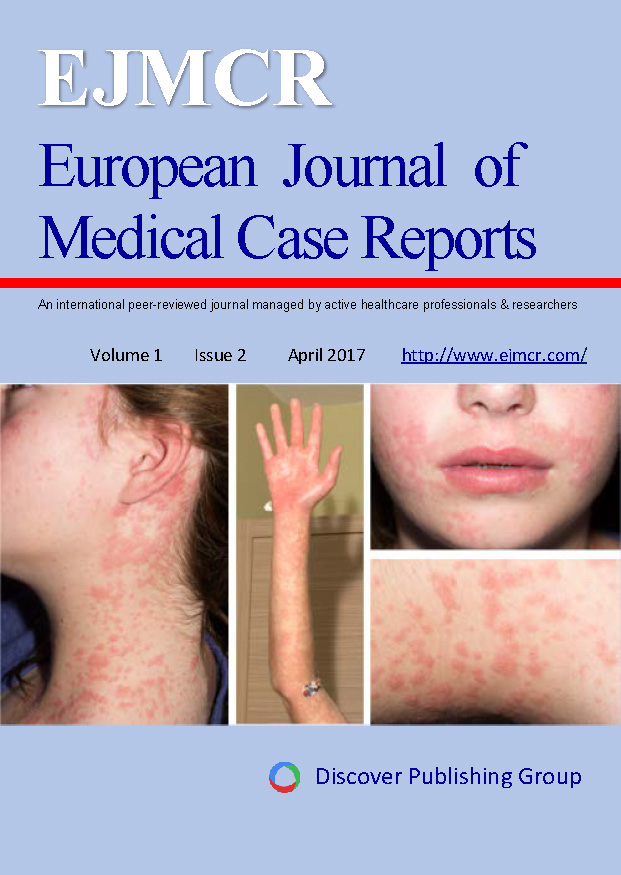 EISSN: 2520-4998
EISSN: 2520-4998
European Journal of Medical Case Reports
The European Journal of Medical Case Reports (EJMCR) is a peer-reviewed, open-access journal dedicated to publishing high-quality case reports that contribute valuable insights to medical practice. EJMCR highlights unique clinical cases, rare conditions, innovative diagnostic techniques, and unexpected outcomes, providing a platform for clinicians and researchers to share knowledge and improve patient care worldwide.
Facing technical difficulty in submission? Our support team will assist you. Please send an email to: anastasiia.Pavlenco@sofiafields.com
Already submitted an article?

Journal Metrics
39%
7 Days
45 Days
12 Days
Articles
Ovarian Teratoma with Bowel Fistula managed non-operatively
Mucosa-associated lymphoid tissue lymphoma presenting as intestinal obstruction: a case report
Rapid-onset group A streptococcal pyomyositis after minor blunt leg trauma in an immunocompetent adult: a case report
Atypical Gastrointestinal Presentation and Overcoming Diagnostic and Therapeutic Challenges in Fulminant Capnocytophaga canimorsus Sepsis
Featured Article

Primary adrenal malignancies in Oman in the last decade (2014-2023)
Adrenal gland malignancies are rare but aggressive endocrine tumors. For instance, adrenocortical carcinoma (ACC), a primary adrenal cortical cancer, has an incidence of only about 0.7-2 cases per million population per year. In Oman and the broader Middle East, literature on adrenal malignancies is especially scarce, often confined to single case reports or small series. This study aimed to observe the primary (non-metastatic) adrenal malignancies managed at the study center over the last decade (2013–-2023).
Please read the full paper here. here
Read full article
